Yesterday we traveled to Ōsaka, skirted the Ōkawa—ran our race, our river—riverran past Eve1.
Kitahama was the ward. The Securities Exchange, we saw2.
The Hall3, too, and the banks (Arai4, the Old Branch5)—these we saw.
Nakanoshima6, Sumitomo Mitsui7, The Nippon Life Insurance Building8. Shibakawa9, Opera Domaine10, and Naniwa11 … exultant buildings all.
***
Last stop was the Retro-Modern12, red-bricked, Glasgow-styled, high-tin-ceilinged—made me think of childhood.
Pamphlets by the door told anecdotes of C.R. Mackintosh, a Scot.
Joyce.
The Ōsaka Securities Exchange Building (1935) was designed by Hasebe-Takekoshi Architect Offices. Rice futures have been traded in the area since the Dojima Rice Exchange (1730), and it is home to the world's first derivatives exchange.
The Neo-Renaissance Ōsaka City Central Public Hall, designed by Tatsuno Kingo and Yasushi Kataoka, was completed in 1918. Kitahama broker Einosuke Iwamoto granted a large sum of money to help build the Hall after seeing Carnegie’s success in funding public buildings in America. In Japan, red-brick buildings (akarenga) such as the Hall are far less common than the more earthquake resistant steel-reinforced concrete buildings.
The Arai Building, originally the Houtoku Bank Osaka Branch, dates back to 1922. Designed by Kozo Kawai, it has primarily served as a mixed-use building. Initially it housed a bank and then the Arai Securities offices; the Arai building later accommodated steak restaurants and pâtisseries. Although the building appears classically inspired—evident in its Ionic pillars and granite base—the Arai Building was quite modern for its time. Kozo Kawai, influenced by the Viennese "Secessionist” style, chose to clad the upper floors in tile.
The Bank of Japan (Old Osaka Branch - also designed by Tatsuno Kingo) was completed in 1903 and modeled after the National Bank of Belgium.
(Photo courtesy of osaka-info.jp)
Yutaka Hidaka, Eikichi Hasebe and Kenzo Takekoshi designed the Sumitomo Mitsui Bank Osaka Head Office. Completed in 1930, it underwent a lengthy restoration ending in 2015. The inside has beautiful details as well.
The Nippon Life Insurance Company Main Building was designed by Hasebe & Takekoshi Architectural Firm. The northern half of the main building was finished in 1939, but took its final form in 1962. During the Sino Japanese War and WWII, the Nippon Life Insurance Building’s facade was comprised of a black mortar coating over the concrete. The facade was later clad in granite.
Naniwa Christ Church (Osaka) was built in 1930 by the Takenaka Corporation under the direction of William Merrell Vories (a Christian missionary and naturalized Japanese citizen from Kansas). The church shares its name with Japan’s first self-sustaining Naniwa Church, established in 1877. "Naniwa" is the old name for Osaka.
The Kitahama Retro Building, Osaka (1912) first housed the offices for a stock brokerage firm and later the Kiryuu Sangyo building materials company (which went bankrupt in 1994). In 1996, present owner Juichi Koyama bought the building for use as an English tea room. The Retro Building was constructed in C.R. Mackintosh’s Glasgow-style by an unknown designer.





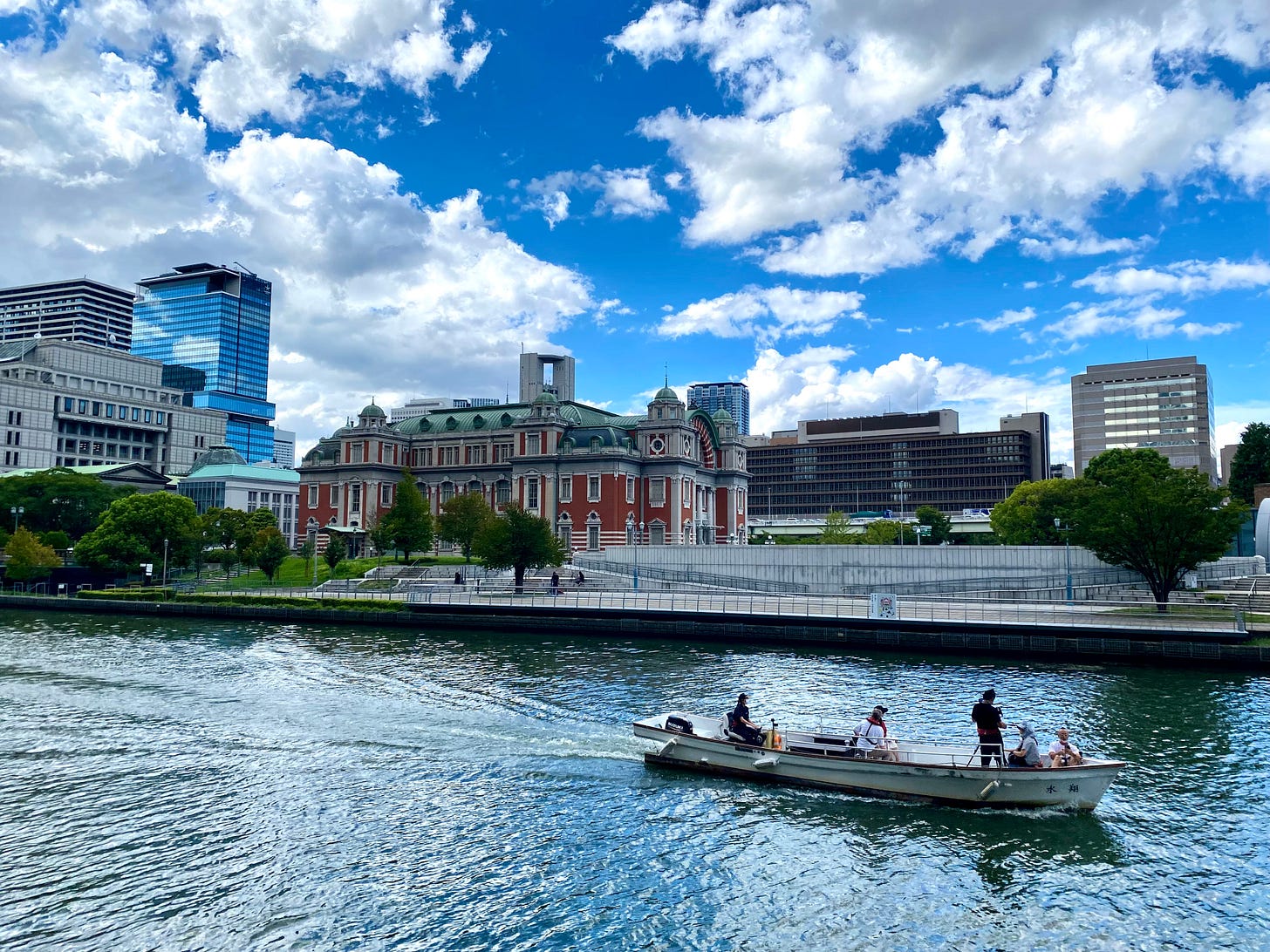

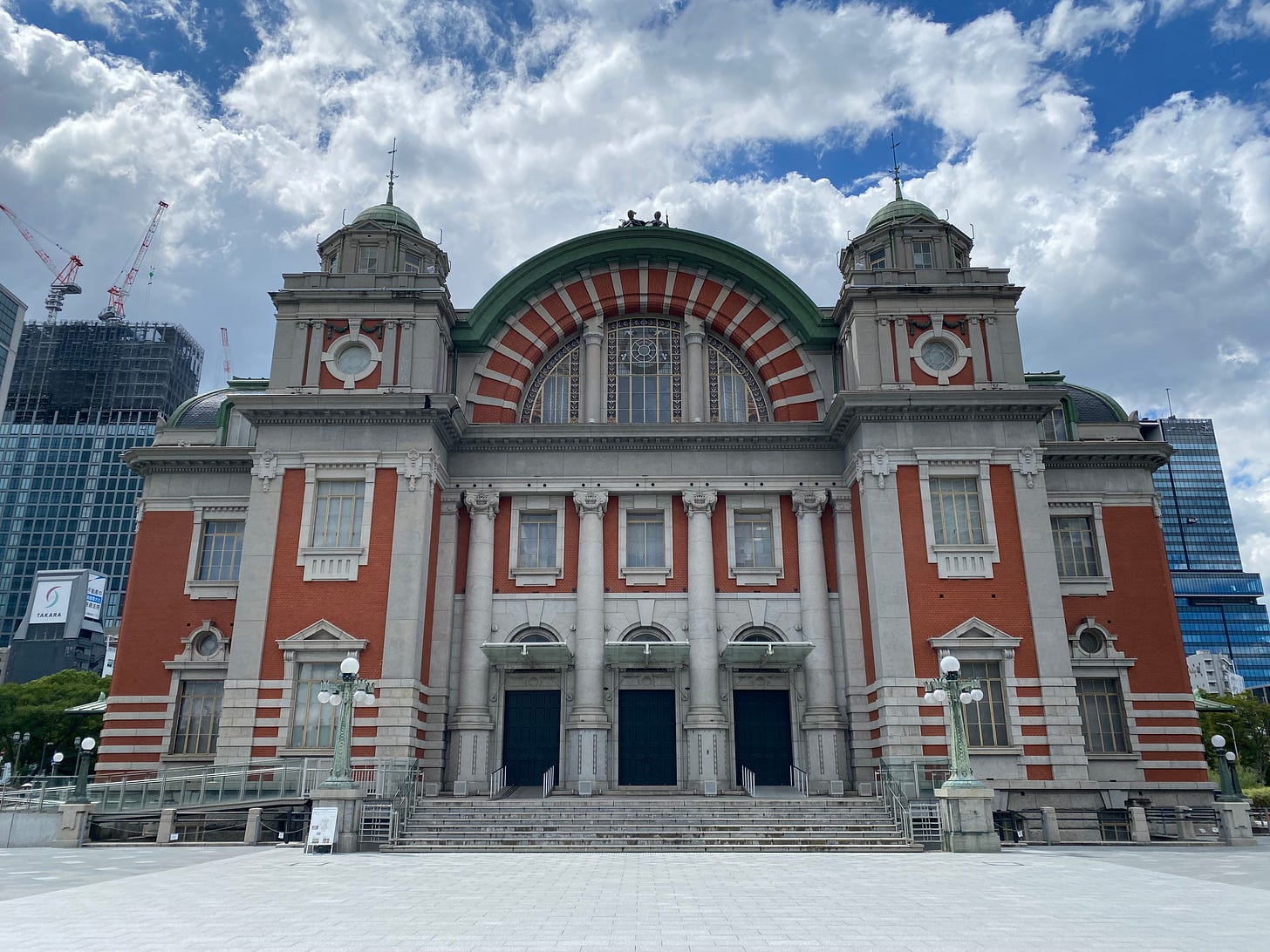


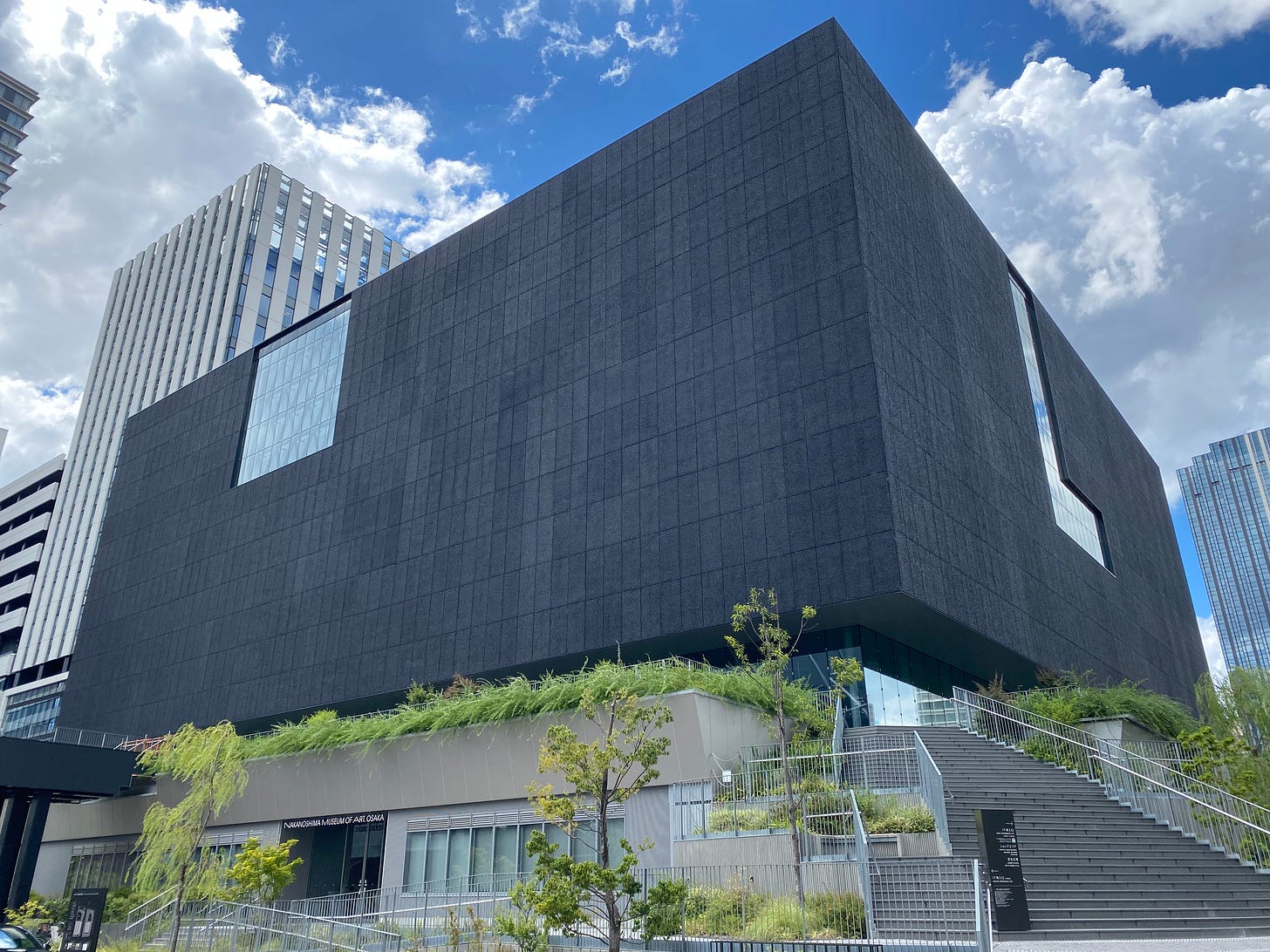


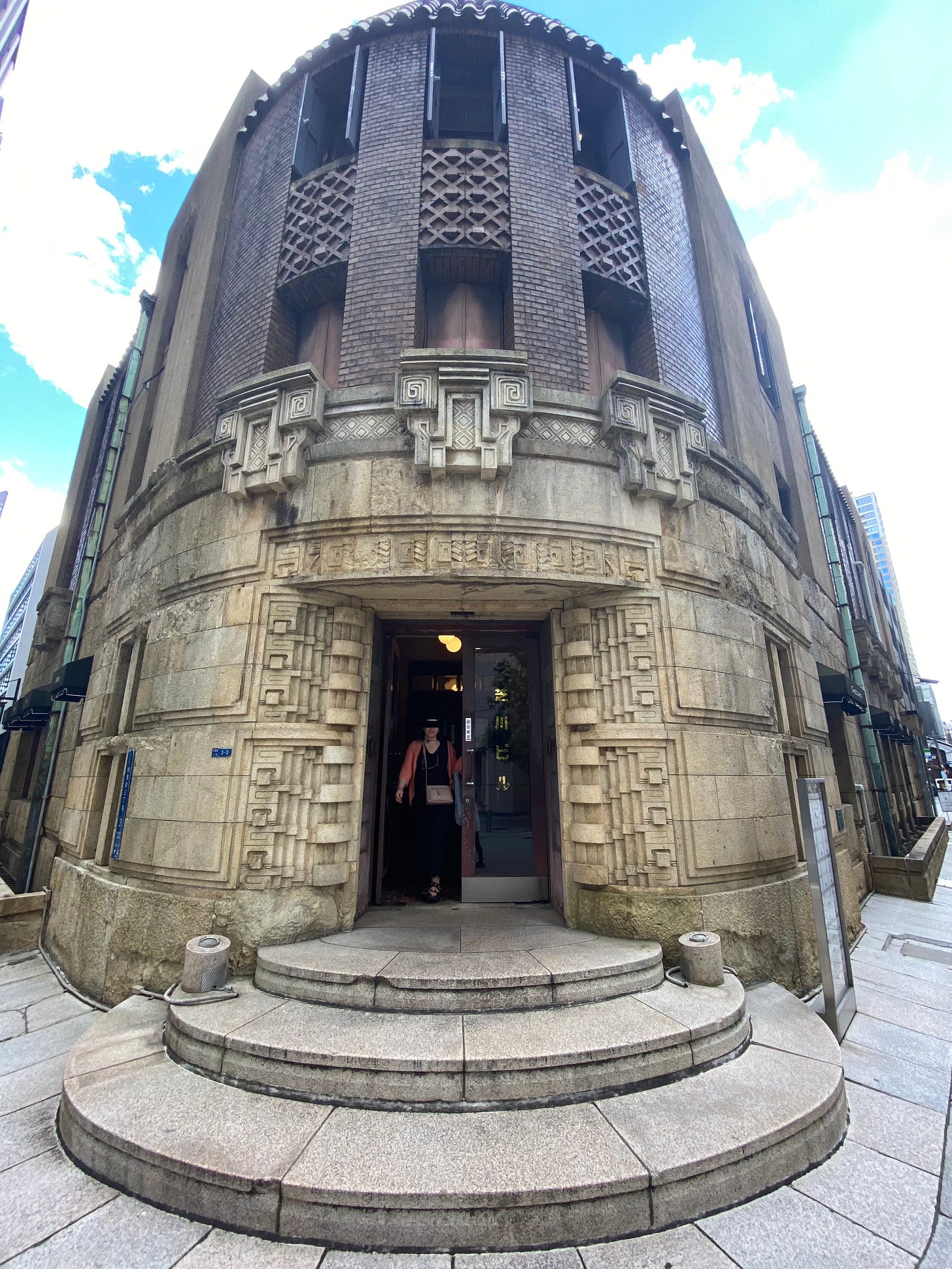

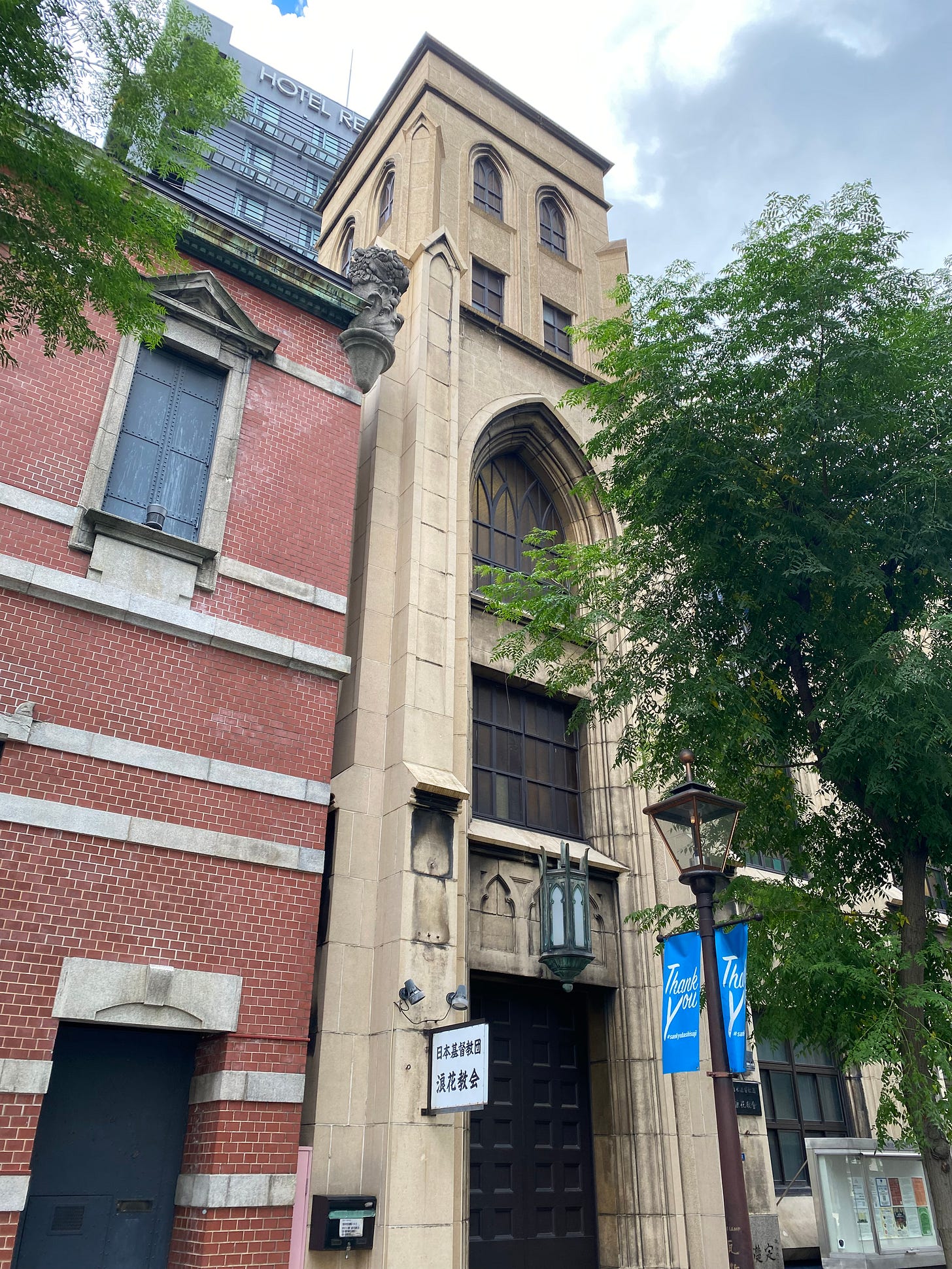

I am a bit surprised to hear so many references to steak! Do they have cows in Japan? Is the steak ANGUS? Is it good? What do they serve with it? Thanks.